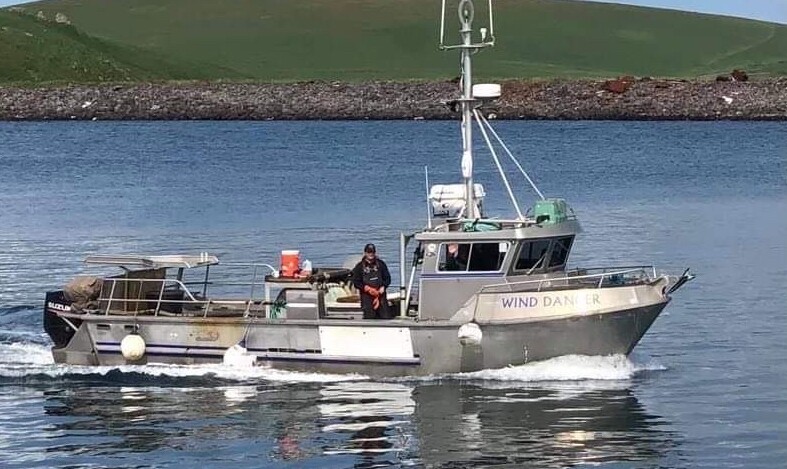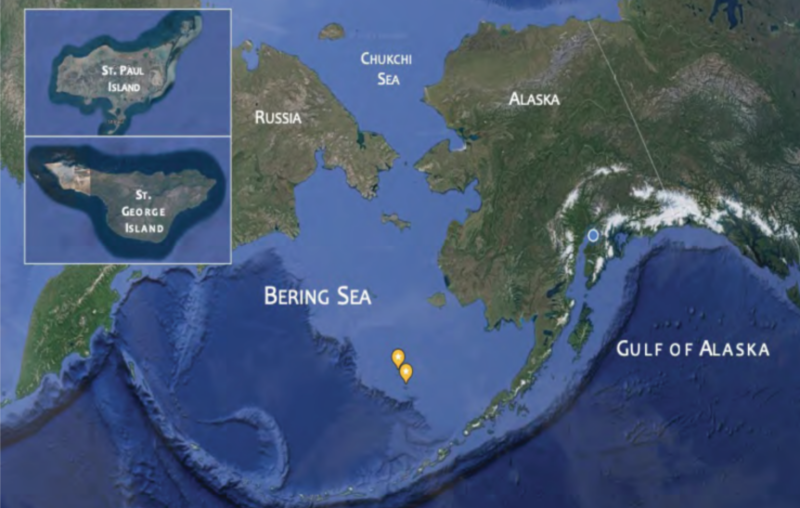Two million pounds of tanner crab were caught in the Bering Sea fishery this fall and winter season, fulfilling a record low quota that is only partially meeting demand for Alaska king crab and snow crab that is off-limits this year.
The 17 vessels in the east and west districts of the fishery caught the full quota by the end of March, according to Ethan Nichols, the Alaska Department of Fish and Game’s assistant area management biologist for the area. Additionally, one vessel fishing the Eastern Aleutian tanner crab fishery off Unalaska Island caught around 49,000 pounds of crab. Nichols said the health of the fishery is strong, with a 2022 survey showing the area’s tanner crab population doubled year-over-year, reaching its highest level since 2005.
“Overall, the fishery performance was pretty good,” Nichols told KUCB. “Vessels were targeting and retaining crabs that were smaller than the industry-preferred size of five inches, but still perfectly legal to retain, and that was somewhat to make up for the lack of snow crab coming out of the Bering Sea.”
Nichols said some buyers were accepting smaller crab they might not have purchased in prior seasons to make up for a hole in supply caused by the closure of other crab fisheries in the Bering Sea.
The federal government has made disaster declarations to cover the canceled Bering Sea snow crab and Bristol Bay red crab harvests, as well as the closure of the king crab fishery in Norton Sound in 2020 and 2021. Bering Sea snow crab, also known as opilio crab, has been declared by NOAA to be overfished.
Another survey is scheduled to take place this summer to get an updated estimate of the health of Bering Sea crab populations, Nichols said.
In the meantime, an effort to create a marine sanctuary in the Bering Sea near the Pribilof Islands is hitting pushback from the commercial fishing industry.
The Unangax (Aleut) community of St. Paul Island has proposed the creation Alaĝum Kanuux̂ marine sanctuary, with co-management between it, the community of nearby St. George Island, and the U.S. government. The sanctuary would encompass nearly 53,000 square miles of waters, excluding a quarter-mile buffer zone around the St. George and St. Paul harbors and all shoreside and submerged industrial facilities on both islands. The National Oceanic and Atmospheric Administration (NOAA) accepted the nomination in June 2022.
Lauren Divine, the director of the tribe’s ecosystem conservation office, said her community believes the sanctuary would increase tourism, pull in research dollars, and give it greater agency to manage local subsistence and commercial fisheries, which are currently managed by NOAA and the state of Alaska.
“That co-management aspect is really important because it's a step towards self-determination, sovereignty,” Divine told KUCB. “It really speaks to going back to Indigenous stewardship of lands and waters, which have operated successfully and sustainably since time immemorial.”
But commercial fishing interests have lined up in opposition to the proposal, arguing the co-management proposal threatens their livelihoods. At an April 6 meeting in Anchorage, Alaska, hosted by NOAA, several industry representatives spoke out against the proposal, including Todd Loomis, the director for Ocean Peace, a commercial fishing company operating six catcher-processors that fish in the area. Loomis said the proposal had caused uncertainty and confusion.
“I saw a lot of wiggle words in terms of the authorities, what applies and what doesn’t apply. And it did not provide any comfort,” Loomis said.
Companies participating in Alaska pollock fishery, which has been criticized by the Alaska Bering Sea Crabbers, with claims their nets damage crab habitat and result in crab bycatch, are concerned the marine sanctuary would limit their ability to fish in the region.
“These are the best-managed fisheries in the world and you want to put a sanctuary in the middle of it,” Dennis Robinson, the president of the Qawalangin Tribe of Unalaska, and the city’s vice mayor, said at the hearing. “We are opposed to it.”
But Divine said the creation of the Alaĝum Kanuux̂ sanctuary would not prohibit fishing there, and that any new regulations impacting fisheries within the sanctuary would still have to be approved by the North Pacific Fishery Management Council.
“Sanctuaries, by legal definition, cannot exclude fisheries. That's not an activity that they can prohibit,” Divine said. “Commercial fisheries will continue into the future. Subsistence fisheries will continue into the future.”
Alaska’s two U.S. senators, Lisa Murkowski and Dan Sullivan, penned a letter to NOAA in February 2022, asking it to reject the sanctuary’s nomination. NOAA must eventually decide whether to advance the proposal, which would initiate a formal multi-year designation process.
“We are making this nomination because we need to get ahead of the changes that are happening around us but still keep our fishing economy strong,” said Simeon Swetzof Jr., captain of the F/V Wind Dancer and a St. Paul tribal member, in 2021.
“Our tribe chose this national marine sanctuary process because of its flexibility. The North Pacific council will continue to manage fisheries in this area, and that will not change. The National Marine Sanctuaries Act is crystal clear that commercial fisheries will operate in the Alaĝum Kanuux̂, and that council management will continue. My commercial fishing colleagues and I are committed to this because we know fishing will be conserved alongside our cultural resources and the ecosystem.”
This story originally appeared on SeafoodSource.com and is republished here with permission.








